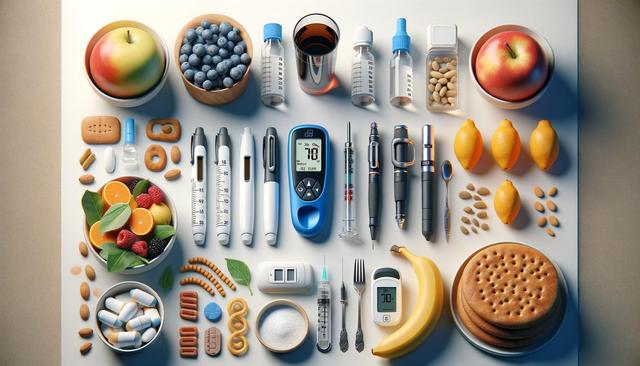Understanding the Shift in Type 2 Diabetes Management
Type 2 Diabetes, a chronic condition characterized by insulin resistance and elevated blood glucose levels, has seen a transformation in how it is managed. Traditionally, lifestyle changes like diet and exercise were combined with oral medications such as metformin. While these approaches remain foundational, modern strategies now incorporate a broader array of treatments that address the condition more holistically and effectively. This shift is driven by deeper insights into the disease’s mechanisms, advances in medical technology, and a focus on personalized care.
Patients can now explore treatment plans tailored to their unique health profiles. Factors such as age, weight, cardiovascular health, and kidney function are taken into account in choosing the appropriate therapy. This individualized approach aims to improve not just blood sugar levels but overall quality of life by minimizing side effects and addressing related health concerns.
Innovative Medications and Their Benefits
Pharmaceutical advancements have introduced new drug classes that offer more targeted control of blood sugar levels. These include:
- GLP-1 receptor agonists: These medications mimic a hormone that stimulates insulin production while decreasing appetite and slowing digestion.
- SGLT2 inhibitors: These help the kidneys remove excess glucose from the body through urine.
- DPP-4 inhibitors: These work by prolonging the action of hormones that increase insulin release after meals.
These medications not only help with glycemic control but also offer additional health benefits, such as weight management and cardiovascular protection. Some have been shown to reduce the risk of heart attack and stroke, which are common complications for people with Type 2 Diabetes.
Technological Tools Supporting Diabetes Care
Beyond pharmaceuticals, technology plays a significant role in modern diabetes management. Continuous Glucose Monitors (CGMs) and smart insulin pens are two examples of tools that provide real-time data and improve treatment accuracy. CGMs allow users to track glucose levels throughout the day without constant finger pricks, offering insights into how diet, exercise, and medications affect their condition.
Other technological innovations include:
- Mobile health apps that track blood sugar, meals, and activity
- Wearable devices that sync with healthcare providers’ systems
- Artificial pancreas systems that automate insulin delivery based on glucose readings
These tools empower individuals to take a more active role in their care and help healthcare providers make data-driven decisions for better outcomes.
The Role of Lifestyle and Integrative Approaches
While medication and technology are crucial, lifestyle remains a cornerstone of Type 2 Diabetes management. However, modern approaches to lifestyle changes are more integrative and supportive than in the past. Medical professionals now work closely with patients to develop sustainable habits that fit their daily routines rather than imposing rigid plans that may be hard to follow.
Key lifestyle strategies include:
- Personalized nutrition plans based on dietary preferences and health goals
- Exercise routines tailored to physical ability and interests
- Stress management techniques such as mindfulness and yoga
- Behavioral therapy to address emotional eating or motivation issues
These strategies are often delivered through multidisciplinary care teams, including dietitians, physical therapists, psychologists, and diabetes educators, ensuring comprehensive support.
Emerging Trends and What the Future Holds
The future of Type 2 Diabetes treatment looks promising, with ongoing research exploring even more refined therapies. Gene-based treatments, precision medicine, and microbiome-modifying therapies are being investigated as potential breakthroughs. These innovations aim to address the root causes of the disease, rather than just managing symptoms.
Another promising trend is the use of digital therapeutics—clinically validated software programs that guide users through behavior change and disease management. These tools often complement traditional treatments and enhance adherence, particularly for patients who struggle with consistent self-care.
Additionally, community-based interventions are gaining traction. These programs focus on social determinants of health by providing access to healthy food, safe spaces for physical activity, and educational resources in underserved areas.


